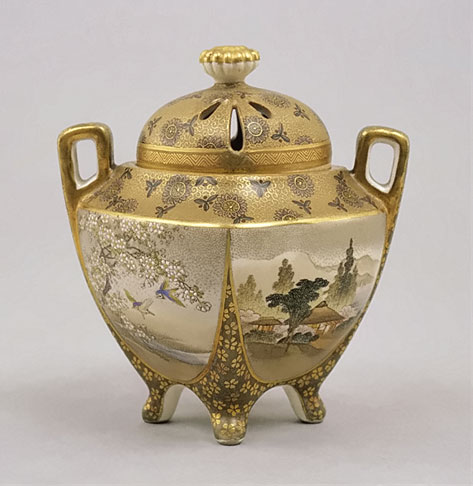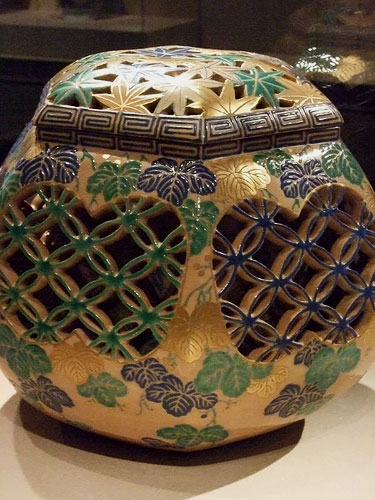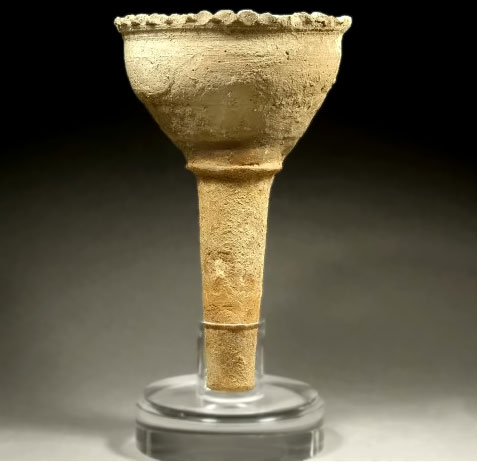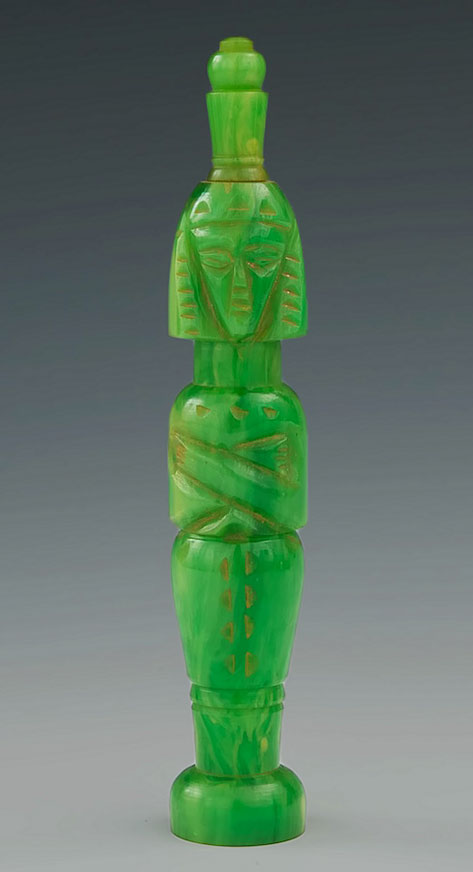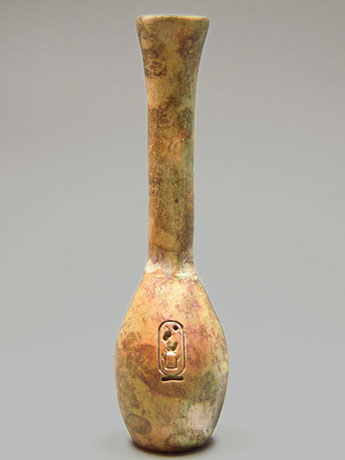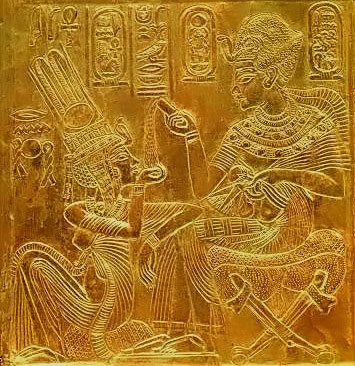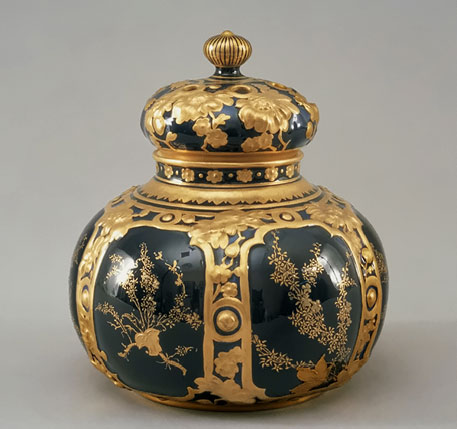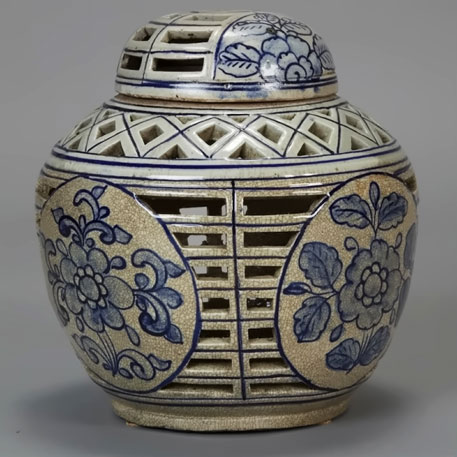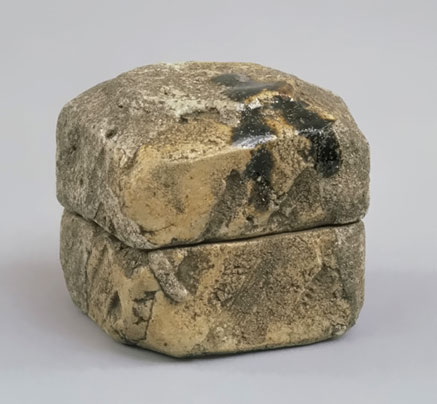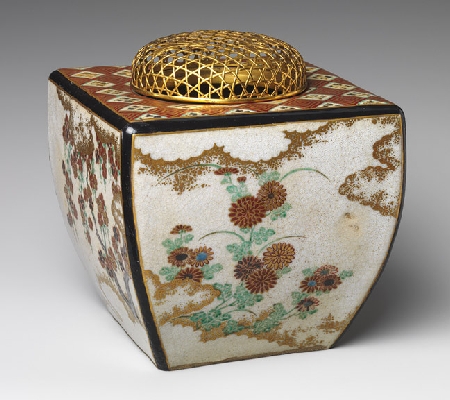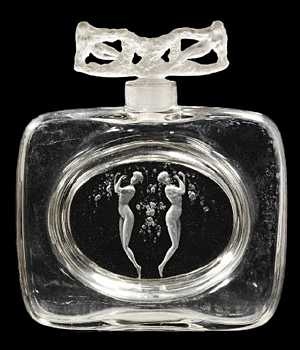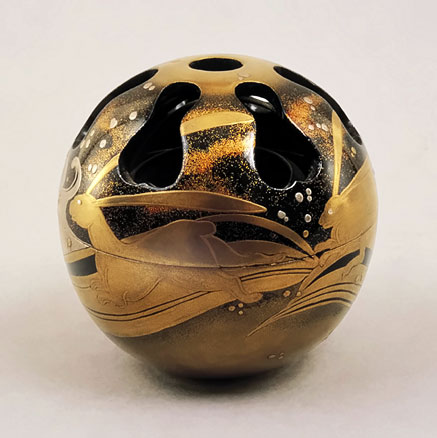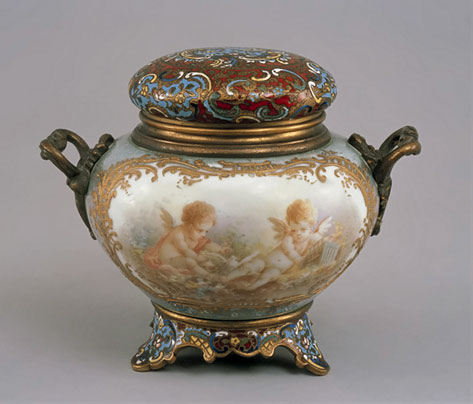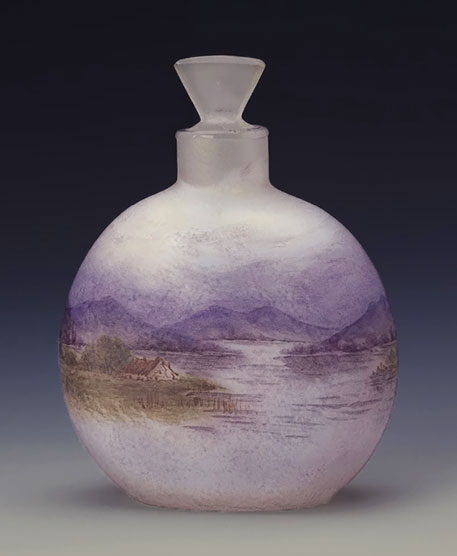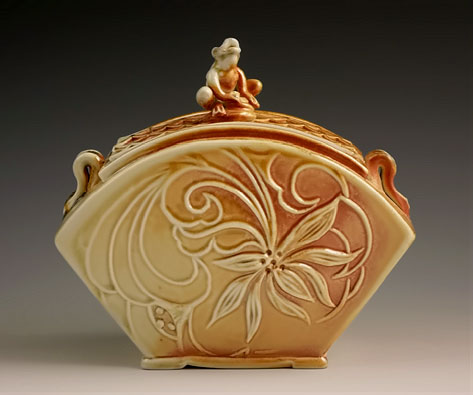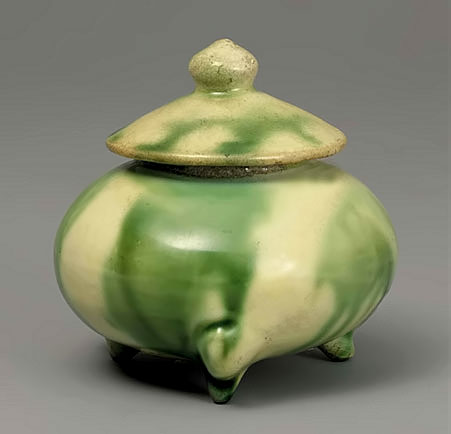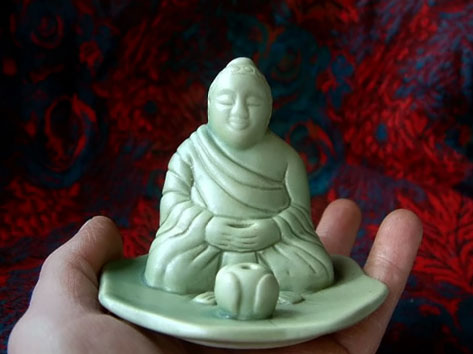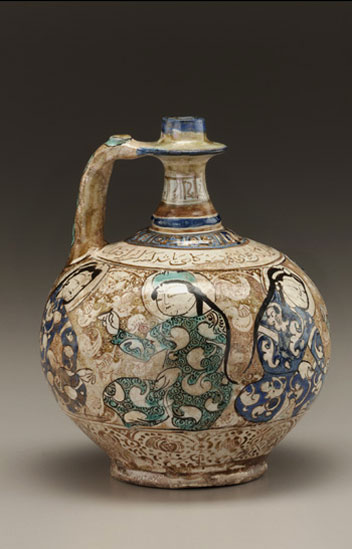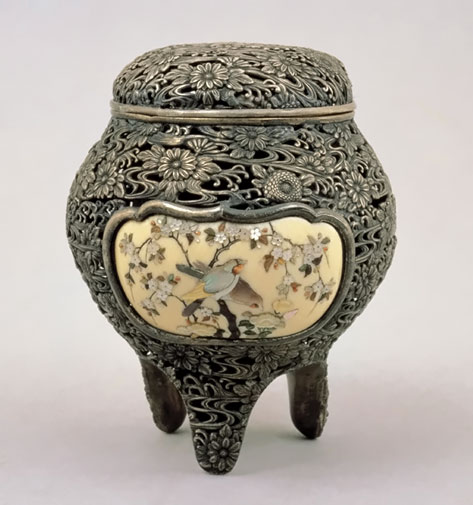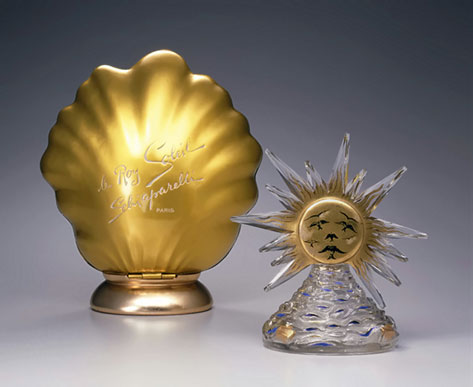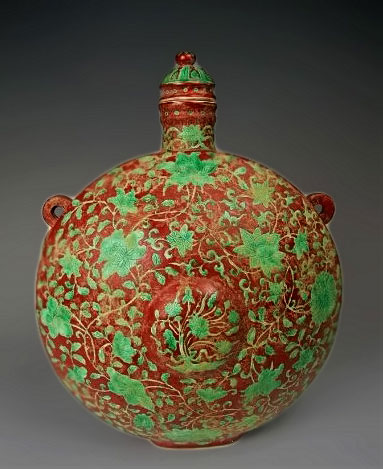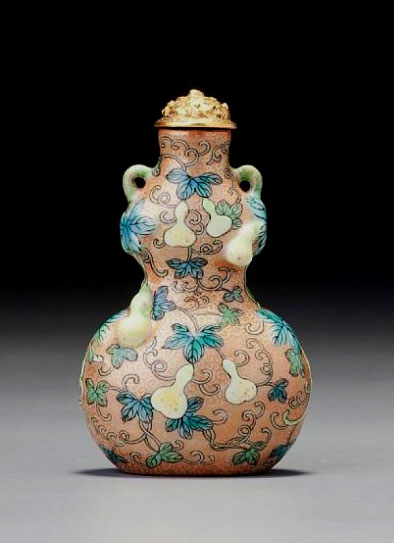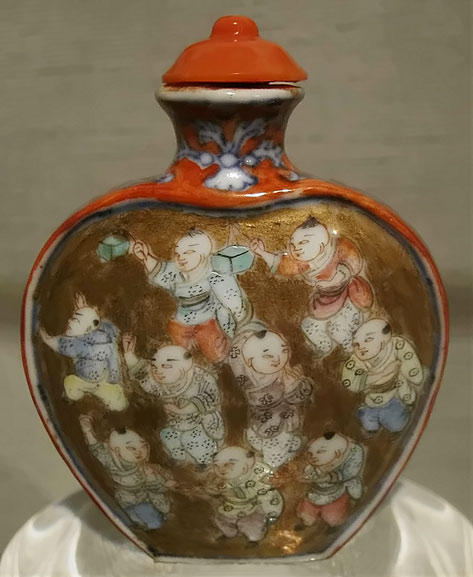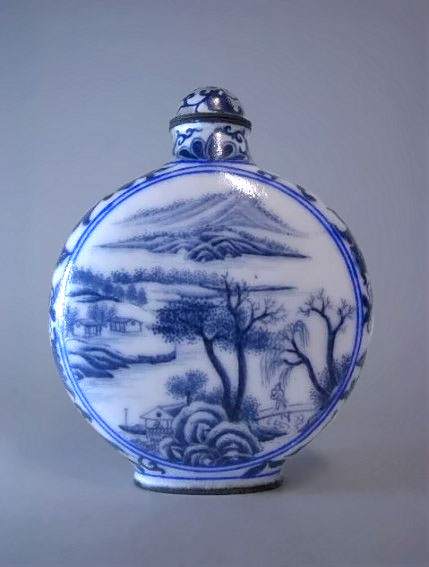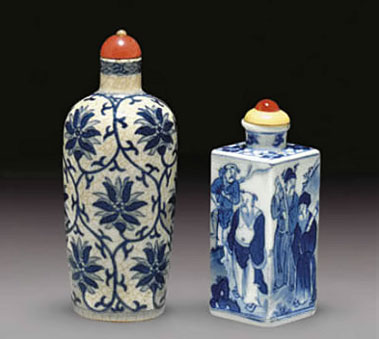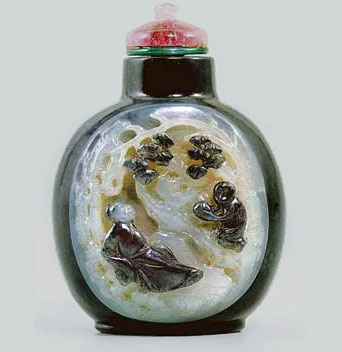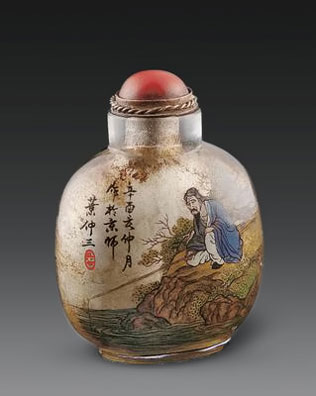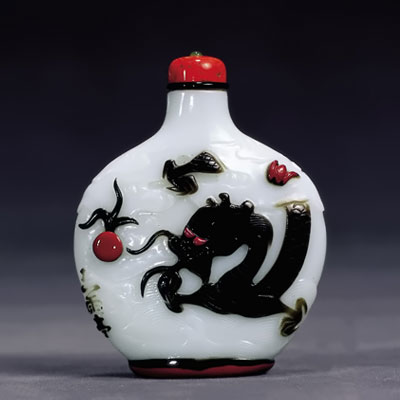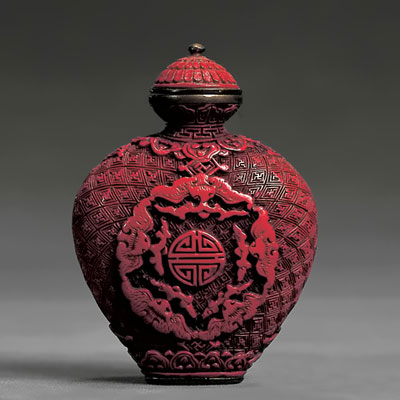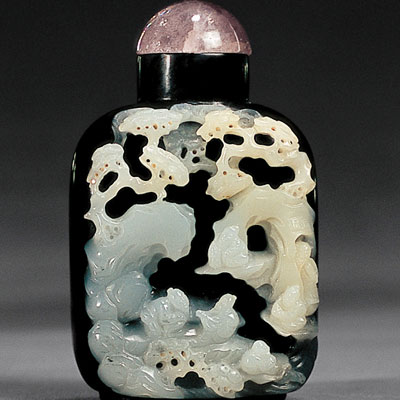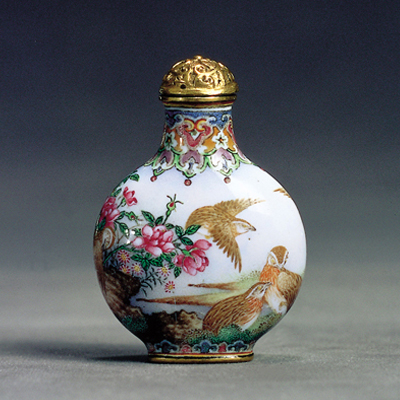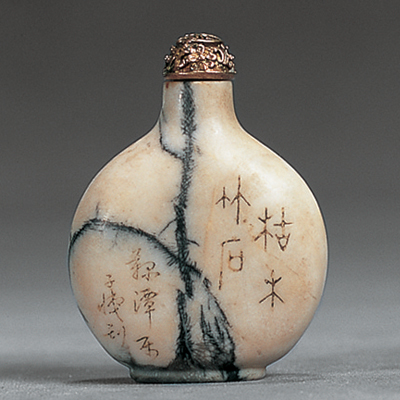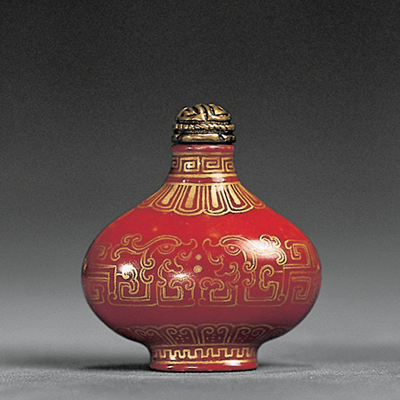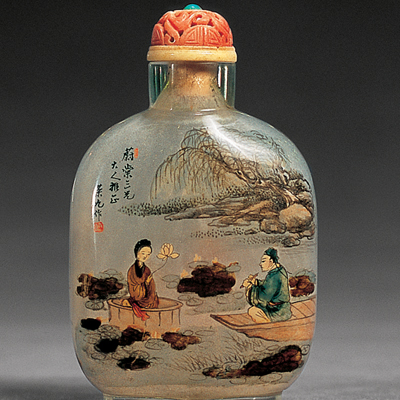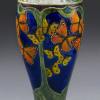Snuff bottles, incense, perfume and potpourri vessels :
The use of fragrant oils, incense and perfumes have really been in use since humans first came into contact with flowers, herbs and spices. In ancient times, sweet-smelling flowers and rich blends of fragrant spices were steeped in oil (not alcohol) — which took up the fragrance and was then decanted into jars. Perfumery, or the art of making perfumes, began in ancient Egypt but was developed and further refined by the Romans and the Arabs.The Egyptians , who weren’t really a seafaring country, were motivated to take to the sea in the pursuit of exotic fragrances such as myrrh and frankincense, which they used for their embalming and in their temples Most ancient religions used perfumes and incense for temple worship and cerermony. Although perfumes and perfumery also existed in East Asia, most of its fragrances were incense based. The first modern perfume, made of scented oils blended in an alcohol solution, was made in 1370 at the command of Queen Elizabeth of Hungary and was known throughout Europe as Hungary Water.
Kinkohsan Ware Incense Burner
Ceramic potpourri vessel
Byzantine Incense Burner
Mummy shaped Egyptian perfume flask
Pharaoh Hatshepsut perfume vessel.
Tutankamun pouring perfume oil onto the waiting hand of his queen Ankhesenamun, as shown on the gilded side of his Nekhbet shrine.
Potpourri Receptacle by Crown Derby
( Takasago Fragrance Museum )
Chinese Blue and White Pierced Ceramic Covered Potpourri Jar
Fragrant oil burner
Garan-seki (old temple stone) incense case
Incense Burner (Koro ) Edo period (1615–1868)
( Met Museum )
A spherical incense burner with a design of waves, rabbits, gold and silver maki-e lacquer.
Late Edo Period, 19th Century
Since it is designed to stay upright and can be inserted into the sleeve of a kimono, it is also called a sode-kohro (sleeve incense burner).
Potpourri Receptacle by Limoges
Early 19th century
( Takasago )
Perfume Bottle by Daum Brothers
Potpourri Box Harmony by Eliza Wang
via Gillian McMillan.com
Three-legged jar/incense burner with Tohsansai glaze and green dapple.
Green Buddha Incense Burner
Perfume oil vessel
Japanese Silver incense burner with Shibayama-style inlay.
( Takasago Fragrance Museum )
Le Roy Soleil by Salvador Dali
Censer from Mongolia
Snuff Bottles
The craft of snuff bottle-making dates back to the Ming Dynasty, and came to flourish fully during the Qing dynasty. While snuff first came to China from the West, the snuff bottle is an absolute Chinese invention which combines both Chinese and Western cultures. Snuff bottles continued to be in fashion for over two hundred years until the end of the Qing dynasty, and was an art form connected closely with Imperial tastes. Initially only used within palace circles, snuff bottles were soon collected and used among literary and scholarly circles in the Qing society, as well as the merchant classes. Incorporating the most sophisticated techniques of China’s applied arts, snuff bottles are the combined product of generations of superb craftsmanship and artistic achievements. Snuff bottles sometimes displayed motifs aimed at bringing wealth, health, good luck, longevity, and even immortality to the owner of the artifact.
Snuff Bottle – Ming Dynasty “Xuande” Reign Porcelain
A ‘famille-rose’ porcelain moulded and enamelled ‘double-gourd’ snuff bottle.
1736 – 1760
Qing dynasty, Qianglong period, glazed porcelain bottle with coral stopper.
Vintage Chinese Snuff bottle
Two Blue and White Porcelain Snuff Bottles
Qing Dynasty Snuff Bottle
Chinese Snuff Bottles from the Sanctum of Enlightened Respect III exhibition, from the collection of Denis Low :
Dragon Fish Cloud Dragon
The Imperial Five Blessings Snuff Bottle
Heaven-on-Earth- (1900-1930 )
Superb Imperial Quails (1736-1780)
Snuff Bottle – The Petrified Forest (1750-1780)
Imperial Gilded Coral Red Porcelain (1736-1780)
A Scene From The Dream Of The Red Chamber (c. 1895-1901 )
An example of a snuff bottle painted on the inside with ink and watercolours through the mouth of the bottle.
It is said that the art form first emerged sometime around the reigns of Qianlong and Jiaqing’s.
Making Scents :
Making Scents from Edurne Bargueno Vida on Vimeo.
Also see VeniceClayArtists post Fragrance atomisers, incense burners

